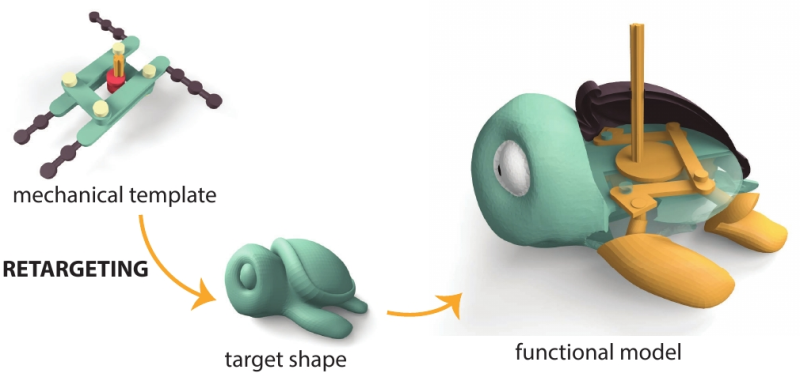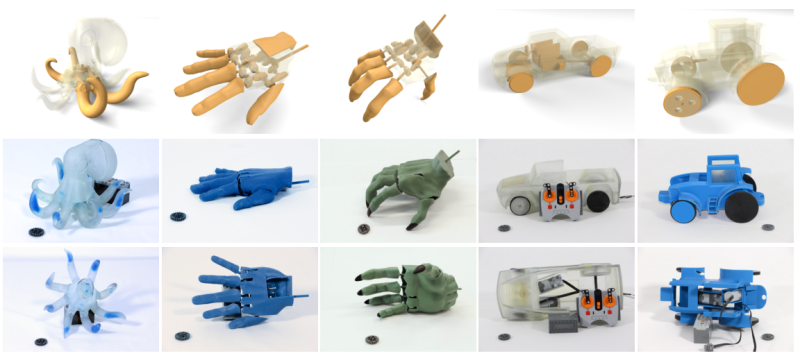Equipping form with function

Common toys such as steerable cars or waving wind-up figures are available as 3D-printable models, which also contain their mechanical components. However, these mechanical structures are optimized to fit exactly one particular shape of the toy. If designers want to reuse such a mechanism with different shapes, the necessary manual adjustments to the individual components are often unmanageable for non-experts, in addition to being extremely tedious. Scientists at the Institute of Science and Technology Austria (IST Austria) in collaboration with colleagues from Adobe Research have now solved this problem by developing an interactive design tool that allows users to easily adjust a mechanical template to the shape of their choice. The software tool, which will be made available in the future, will be presented at this year's prestigious "SIGGRAPH" conference by first author and PhD student Ran Zhang from the research group of Bernd Bickel.
"Given a car model, there is usually one kind of mechanism that provides the functionality and, at the same time, thousands of different shapes that the car can have," explains co-author Thomas Auzinger. "Our code bridges this gap and makes it possible to reuse the mechanism across all shapes. It allows for flexibility," he adds.
People and computers have very different abilities and competences. While humans have an eye for the aesthetics, it is the computer that is best suited at enforcing mathematical constraints and at optimizing the functionality of the generally large number of connected mechanical components, such as axles, gears, wheels, etc. This is why the user and the code interactively work together in an approach that the researchers took for the first time. "Our tool always guarantees functionality, while artists can adjust the mechanical template to fit the design of their choice," explains lead author Ran Zhang.
Three Austrian artists have tested the program already. The professional 3D-modellers came to visit IST Austria in Klosterneuburg, imported the mechanical template of their choice and adjusted it to fit self-designed 3D-shapes without having to worry about mechanical constraints. Normally, extensive manual adjustments to each of the individual components of the mechanical structure would have been necessary—a task that is tedious if not downright impossible for non-experts. With the newly developed tool, in contrast, adjustment is easy and happens in real time. "Even novice users will be able to create a functional model from the shape of their choice," says Ran Zhang.
The viability of the novel tool was shown for different mechanical templates: for waving wind-up toys, periodic motions of hand models, steerable and motorized RC cars, and for vehicles with moveable rotors such as helicopters and planes. Each of them can be adjusted to produce a wide variety of differently-shaped figurines and vehicles. "While our result is already quite applicable, I want to point out that it is still an explorative research project," says Thomas Auzinger. "We took an entirely new modeling approach based on mathematical optimization and showed its viability. It was a proof of concept."

More information:
Find out more about the project here:
visualcomputing.ist.ac.at/publ … ations/2017/MechRet/
Provided by Institute of Science and Technology Austria



















